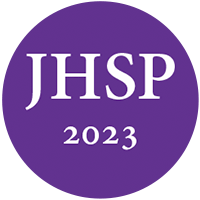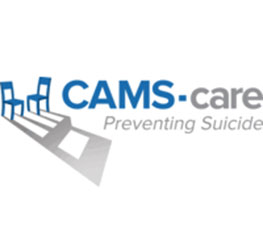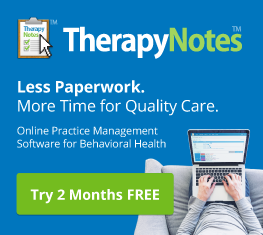The professional home for health service psychologists.
Join a community of 15,000 psychologists and trainees.
Learn it today. Apply it tomorrow.
Connecting you to what you need in your career.
Making a difference.
Steadman, J.L. (2021). Ethical and legal considerations when patients disclose knowledge of a weapon in a school. Journal of Health Service Psychology. https://doi.org/10.1007/s42843-021-00040-7
In the modern era, concerns over school-related gun violence are as high as ever. In their clinical work, psychologists who work with youth may encounter reports of real threats of gun violence at school. In this article, the author presents a case vignette in which a middle-school client reports having documented knowledge that a peer brought a gun to school. The author explores the ethical decision-making and other practical considerations in choosing to intervene and report the gun possession to school personnel. The author outlines not only measures to protect the client but also considerations in protecting and advocating for the student who actually brought the gun to school.
Access continuing education course on CE.NationalRegister.org
45 CFR § 164.512(j)(1)(i). (2000). https://www.law.cornell.edu/cfr/text/45/164.512
American Association of School Administrators. (n.d.) Code of Ethics. Retrieved from https://aasa.org/content.aspx?id=1390
American Psychological Association. (2017). Ethical principles of psychologists and code of conduct (2002, amended effective June 1, 2010, and January 1, 2017). https://www.apa.org/ethics/code/
American Psychological Association Zero Tolerance Task Force. (2008). Are zero tolerance policies effective in the schools? An evidentiary review and recommendation. American Psychologist, 63, 852-862.
Alathari, L., et al. (2019). Protecting America’s Schools: A U.S. Secret Service analysis of targeted school violence. National Threat Assessment Center. Retrieved from https://everytownresearch.org/stat/in-77-of-school-shootings-at-least-one-person-most-often-a-peer-knew-of-the-shooters-plan/
Bell, C. (2015). The hidden side of zero tolerance policies: The African American perspective. Sociology Compass, 9(1), 14-22.
Everytown for Gun Safety Support Fund. (2020a). A more complete picture: The contours of gun injury in the United States. Retrieved from https://everytownresearch.org/report/nonfatals-in-the-us/
Everytown for Gun Safety Support Fund. (2020b). Keeping our schools safe: A plan for preventing mass shootings and ending all gun violence in American schools. Retrieved from https://everytownresearch.org/report/preventing-gun-violence-in-american-schools/
Fabelo, T., Thompson, M. D., Plotkin, M., Carmichael, D., Machbanks, M. P., & Booth, E. A. (2011). Breaking schools’ rules: A stateside stufy of how school discipline relates to students’ success and juvenile justice involvement. New York, NY: The Council of State Governments Justice Center & Public Policy Research Institute. Retrieved from http://justicecenter.csg.org/resources/juveniles
Fowler, K.A., Dahlberg, L. L., Haileyesus, T., Gutierrez, C., & Bacon, S. (2017). Childhood firearm injuries in the United States. Pediatrics, 140 (1).
Gershoff, E. & Font, S. (2018). Corporal punishment in U.S. public schools: Prevalence, disparities in use, and status in state and federal policy. Social Policy Report, 30, 1.
Giffords Law Center to Prevent Gun Violence (2021, June 18). Safe Storage. https://giffords.org/lawcenter/gun-laws/policy-areas/child-consumer-safety/safe-storage/
Johnson, R. M., Barber, C., Azrael, D., Clark, D. E., & Hemenway, D. (2010). Who are the owners of firearms used in adolescent suicides? Suicide and Life-Threatening Behavior, 40(6), 609-611.
National Association of Secondary School Principals. (n.d.) Ethics for School Leaders. Retrieved from https://www.nassp.org/top-issues-in-education/position-statements/ethics-for-school-leaders/
National Conference of State Legislatures. (2018). Mental Health Professionals’ Duty to Warn. https://www.ncsl.org/research/health/mental-health-professionals-duty-to-warn.aspx
Peterson, J. & Densley, J. (2019). School shooters usually show these signs of distress long before they open fire, our database shows. The Conversation. https://theconversation.com/school-shooters-usually-show-these-signs-of-distress-long-before-they-open-fire-our-database-shows-111242
Rosenbaum, J. (2020). Educational and criminal justice outcomes 12 years after school suspension. Youth & Society, 52(4), 515-547.
Smart, R., Morral, A. R., Smucker, S., Cherney, S. Schell, T. L., Peterson, S., Ahluwalia, S. C., Cefalu, M., Xenakis, L., Ramchand, R., & Gresanz, C. R. (2020). The critical synthesis of research evidence on the effects of gun policies in the United States, second edition. Retrieved from https://www.rand.org/pubs/research_reports/RR2088-1.html.
Jones-Smith, E. (2013). Strengths-based therapy: Connecting theory, practice, and skills. Los Angeles: Sage.
Stuart-Cassel, V., Mower, E., & Nuñez, B. (2020). State report on the implementation of the Gun-Free Schools Act (GFSA): U.S. states and other jurisdictions – 2017-18 School Year (SY 2017-18). Washington, DC: National Center on Safe Supportive Learning Environments. Retrieved from https://safesupportivelearning.ed.gov/sites/default/files/SY17-18-GFSA-StateImpRpt-508.pdf
U.S. Department of Education. (2010). Report on the Implementation of the Gun-Free Schools Act in the states and outlying areas for school years 2005-06 and 2006-07. Washington, DC: Office of Safe and Drug-Free Schools. Retrieved from https://www2.ed.gov/about/reports/annual/gfsa/gfsarp100610.pdf
U.S. Department of Health and Human Services. (2018). What constitutes a “serious and imminent threat” that would permit a health care provider to disclose PHI to prevent harm to the patient, another person, or the public without the patient’s authorization or permission? Retrieved June 18, 2021 from https://www.hhs.gov/hipaa/for-professionals/faq/3002/what-constitutes-serious-imminent-threat-that-would-permit-health-care-provider-disclose-phi-to-prevent-harm-patient-public-without-patients-authorization-permission/index.html
Welsh, R. O. and Little, S. (2018). The school discipline dilemma: A comprehensive review of disparities and alternative approaches. Review of Educational Research, 88(5), 752-794. doi: 10.3102/0034654318791582
Wolf, K. C. & Kupchik, A. (2017). School suspensions and adverse experiences in adulthood. Justice Quarterly, 34(3), 407-430. doi: 10.1080/07418825.2016.1168475
Copyright © 2025 All rights reserved. National Register of Health Service Psychologists









